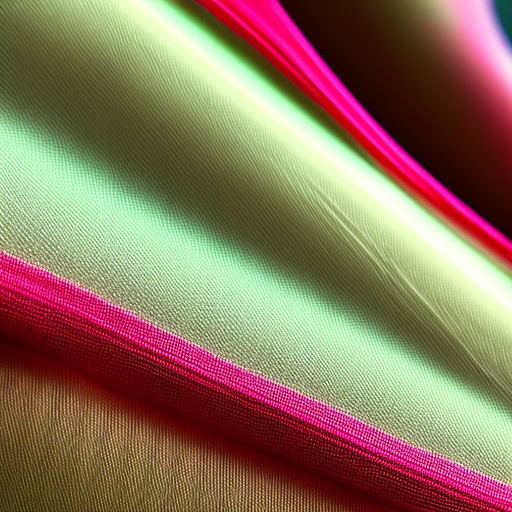
Introduction
Working with spandex fabric can be a bit tricky, but with the right techniques, it is entirely possible to sew beautiful and comfortable garments. Whether you’re sewing workout gear, dance costumes, or swimwear, these sewing spandex tips will help you achieve professional-looking results.
1. Use a stretch needle
When sewing spandex, it is crucial to use a stretch needle. These needles are specifically designed to pierce through the fabric’s stretchy fibers without causing damage. Using a universal needle can lead to skipped stitches or even potential fabric runs.
2. Choose the correct stitch
For spandex, the best stitch options are either a narrow zigzag stitch or a stretch stitch. The zigzag stitch enables the fabric to stretch without breaking the thread. On the other hand, the stretch stitch looks like a lightning bolt and provides excellent elasticity. Avoid using straight stitches as they may restrict the fabric’s stretch.
3. Use stretchy thread
Using a high-quality stretch thread, such as polyester or nylon, is essential for sewing spandex. The elasticity of the thread will allow it to stretch with the fabric, preventing popped seams during movement. Also, keep in mind to wind the bobbin with the same stretch thread for consistent results.
4. Pin and cut carefully
When working with spandex, avoid using regular straight pins as they can leave holes in the fabric. Instead, opt for ballpoint pins or clips that won’t cause damage. Additionally, ensure your cutting tools are sharp to make clean, precise cuts. Using a rotary cutter may provide better results compared to scissors.
5. Practice proper seam finishing
Seam finishing is vital to prevent fraying and increase the durability of your spandex creations. Some common finishing options include using a serger or overlocker, using a stretch stitch, or using a narrow zigzag stitch along the edges of your seams.
6. Test your stitches and tension
Before starting your final project, it’s always recommended to sew some test seams on scrap pieces of spandex. Test different stitch options, thread tensions, and seam finishes to ensure the best results. Spandex varies in stretchiness, so these tests will help you determine what works best for your specific fabric.
Conclusion
Sewing spandex can be intimidating, but with these fundamental tips, you’ll be well on your way to creating fantastic garments that are both stylish and comfortable. Remember to practice, be patient, and don’t be afraid to experiment with different techniques until you find your perfect spandex-sewing groove!




